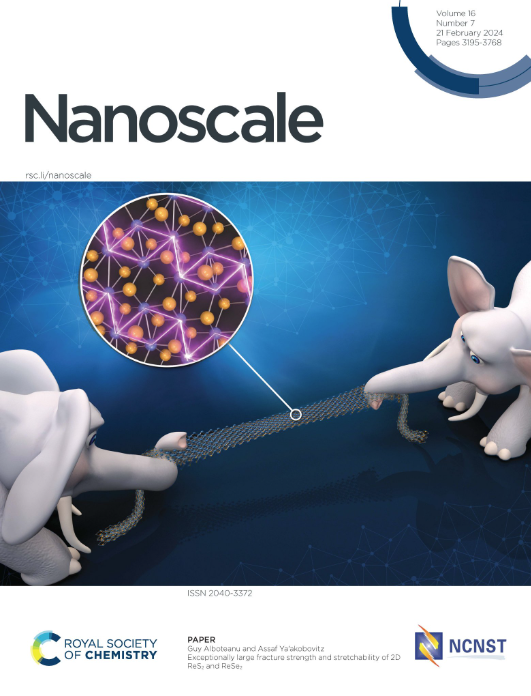Nanochemistry advancing photofertilizer for plant research
IF 5.8
3区 材料科学
Q1 CHEMISTRY, MULTIDISCIPLINARY
引用次数: 0
Abstract
There is a saying that all living things grow by the sun, which signifies the vital role of solar energy in the accumulation of biochemical energy on the earth. As primary producers in ecosystems, plants play a fundamental role in bioaccumulation. With the rapid advancement of nanotechnology, nanomaterials (NMs) have been playing an increasingly essential role in the field of plant research. NMs have been used as an intelligent agent, which has a larger contact surface per unit mass compared with bulk-products so that it can play a greater role at specific points of plant target. From the perspective of scientific research, NMs have shown many characters on account of their flexible size, composition, physical properties and surface chemistry. Especially, for the light-responsive NMs (LRNMs) for plant research (named as nano-photofertilizer), when they enter specific parts of the plants, they can regulate or monitor plant body functions through photon conversion or generation of other functional species. Hitherto, the progress of LRNMs in the field of plant research mainly covers photon-mediated optical imaging, growth regulation, optical detection/sensing and antimicrobial/pesticides. In the present review, the interactions between LRNMs and plants and the recent developments of LRNMs regarding plant research will be discussed and summarized. Ultimately, the current challenges and prospects will be indicated, through which to offer a timely basic guidance for future nano-photofertilizer research.纳米化学推进植物光肥研究
有一种说法是万物因太阳而生长,这意味着太阳能在地球上生化能量的积累中起着至关重要的作用。植物作为生态系统的初级生产者,在生物积累中起着基础性作用。随着纳米技术的飞速发展,纳米材料在植物研究领域发挥着越来越重要的作用。NMs作为一种智能代理被使用,与散装产品相比,其单位质量的接触面更大,从而可以在植物目标的特定点上发挥更大的作用。从科学研究的角度来看,纳米材料由于其灵活的尺寸、组成、物理性质和表面化学等方面表现出许多特点。特别是用于植物研究的光响应型NMs (LRNMs)(被称为纳米光肥),当它们进入植物的特定部位时,可以通过光子转换或产生其他功能种来调节或监测植物的身体功能。迄今为止,LRNMs在植物研究领域的进展主要包括光子介导的光学成像、生长调控、光检测/传感和抗菌/农药。本文就LRNMs与植物的相互作用以及LRNMs在植物研究中的最新进展进行了综述。最后指出当前面临的挑战和前景,为今后纳米光肥的研究提供及时的基础指导。
本文章由计算机程序翻译,如有差异,请以英文原文为准。
求助全文
约1分钟内获得全文
求助全文
来源期刊

Nanoscale
CHEMISTRY, MULTIDISCIPLINARY-NANOSCIENCE & NANOTECHNOLOGY
CiteScore
12.10
自引率
3.00%
发文量
1628
审稿时长
1.6 months
期刊介绍:
Nanoscale is a high-impact international journal, publishing high-quality research across nanoscience and nanotechnology. Nanoscale publishes a full mix of research articles on experimental and theoretical work, including reviews, communications, and full papers.Highly interdisciplinary, this journal appeals to scientists, researchers and professionals interested in nanoscience and nanotechnology, quantum materials and quantum technology, including the areas of physics, chemistry, biology, medicine, materials, energy/environment, information technology, detection science, healthcare and drug discovery, and electronics.
 求助内容:
求助内容: 应助结果提醒方式:
应助结果提醒方式:


